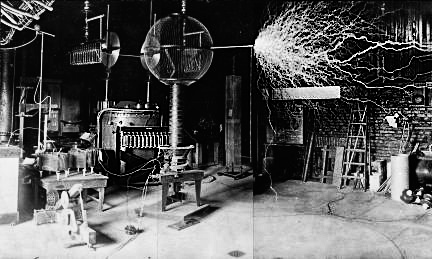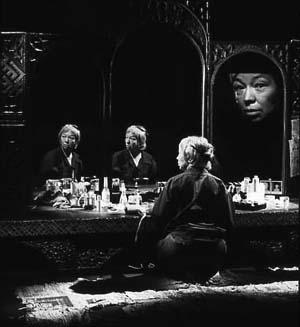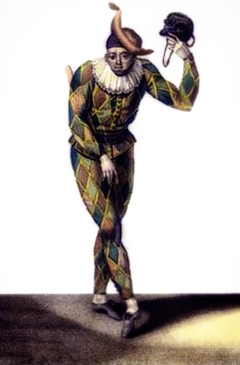Strange is our situation here upon earth. Each of us comes for a short visit, not knowing why, yet sometimes seeming to divine a purpose.
From the standpoint of daily life, however, there is one thing we do know: that man is here for the sake of other men —above all for those upon whose smile and well-being our own happiness depends, and also for the countless unknown souls with whose fate we are connected by a bond of sympathy. Many times a day I realize how much my own outer and inner life is built upon the labors of my fellowmen, both living and dead, and how earnestly I must exert myself in order to give in return as much as I have received. My peace of mind is often troubled by the depressing sense that I have borrowed too heavily from the work of other men.
I do not believe we can have any freedom at all in the philosophical sense, for we act not only under external compulsion but also by inner necessity. Schopenhauer’s saying— “A man can surely do what he wills to do, but he cannot determine what he wills”—impressed itself upon me in youth and has always consoled me when I have witnessed or suffered life’s hardships. This conviction is a perpetual breeder of tolerance, for it does not allow us to take ourselves or others too seriously; it makes rather for a sense of humor.
To ponder interminably over the reason for one’s own existence or the meaning of life in general seems to me, from an objective point of view, to be sheer folly. And yet everyone holds certain ideals by which he guides his aspiration and his judgment. The ideals which have always shone before me and filled me with the joy of living are goodness, beauty, and truth. To make a goal of comfort or happiness has never appealed to me; a system of ethics built on this basis would be sufficient only for a herd of cattle.
Without the sense of collaborating with like-minded beings in the pursuit of the ever unattainable in art and scientific research, my life would have been empty. Ever since childhood I have scorned the commonplace limits so often set upon human ambition. Possessions, outward success, publicity, luxury—to me these have always been contemptible. I believe that a simple and unassuming manner of life is best for everyone, best both for the body and the mind.
My passionate interest in social justice and social responsibility has always stood in curious contrast to a marked lack of desire for direct association with men and women. I am a horse for single harness, not cut out for tandem or team work. I have never belonged wholeheartedly to country or state, to my circle of friends, or even to my own family. These ties have always been accompanied by a vague aloofness, and the wish to withdraw into myself increases with the years.
Such isolation is sometimes bitter, but I do not regret being cut off from the understanding and sympathy of other men. I lose something by it, to be sure, but I am compensated for it in being rendered independent of the customs, opinions, and prejudices of others, and am not tempted to rest my peace of mind upon such shifting foundations.
My political ideal is democracy. Everyone should be respected as an individual, but no one idolized. It is an irony of fate that I should have been showered with so much uncalled for and unmerited admiration and esteem. Perhaps this adulation springs from the unfulfilled wish of the multitude to comprehend the few ideas which I, with my weak powers, have advanced.
Full well do I know that in order to attain any definite goal it is imperative that one person should do the thinking and commanding and carry most of the responsibility. But those who are led should not be driven, and they should be allowed to choose their leader.
It seems to me that the distinctions separating the social classes are false; in the last analysis they rest on force. I am convinced that degeneracy follows every autocratic system of violence, for violence inevitably attracts moral inferiors. Time has proved that illustrious tyrants are succeeded by scoundrels.
For this reason I have always been passionately opposed to such regimes as exist in Russia and Italy today. The thing which has discredited the European forms of democracy is not the basic theory of democracy itself, which some say is at fault, but the instability of our political leadership, as well as the impersonal character of party alignments.
I believe that those in the United States have hit upon the right idea. A President is chosen for a reasonable length of time and enough power is given him to acquit himself properly of his responsibilities. In the German Government, on the other hand, I like the state’s more extensive care of the individual when he is ill or unemployed. What is truly valuable in our bustle of life is not the nation, I should say, but the creative and impressionable individuality, the personality —he who produces the noble and sublime while the common herd remains dull in thought and insensible in feeling.
This subject brings me to that vilest offspring of the herd mind—the odious militia. The man who enjoys marching in line and file to the strains of music falls below my contempt; he received his great brain by mistake—the spinal cord would have been amply sufficient. This heroism at command, this senseless violence, this accursed bombast of patriotism—how intensely I despise them! War is low and despicable, and I had rather be smitten to shreds than participate in such doings.
Such a stain on humanity should be erased without delay. I think well enough of human nature to believe that it would have been wiped out long ago had not the common sense of nations been systematically corrupted through school and press for business and political reasons.
The most beautiful thing we can experience is the mysterious. It is the source of all true art and science. He to whom this emotion is a stranger, who can no longer pause to wonder and stand rapt in awe, is as good as dead: his eyes are closed. This insight into the mystery of life, coupled though it be with fear, has also given rise to religion. To know that what is impenetrable to us really exists, manifesting itself as the highest wisdom and the most radiant beauty which our dull faculties can comprehend only in their most primitive forms— this knowledge, this feeling, is at the center of true religiousness. In this sense, and in this sense only, I belong in the ranks of devoutly religious men.
I cannot imagine a God who rewards and punishes the objects of his creation, whose purposes are modeled after our own—a God, in short, who is but a reflection of human frailty. Neither can I believe that the individual survives the death of his body, although feeble souls harbor such thoughts through fear or ridiculous egotism.
It is enough for me to contemplate the mystery of conscious life perpetuating itself through all eternity, to reflect upon the marvelous structure of the universe which we can dimly perceive, and to try humbly to comprehend even an infinitesimal part of the intelligence manifested in nature.










